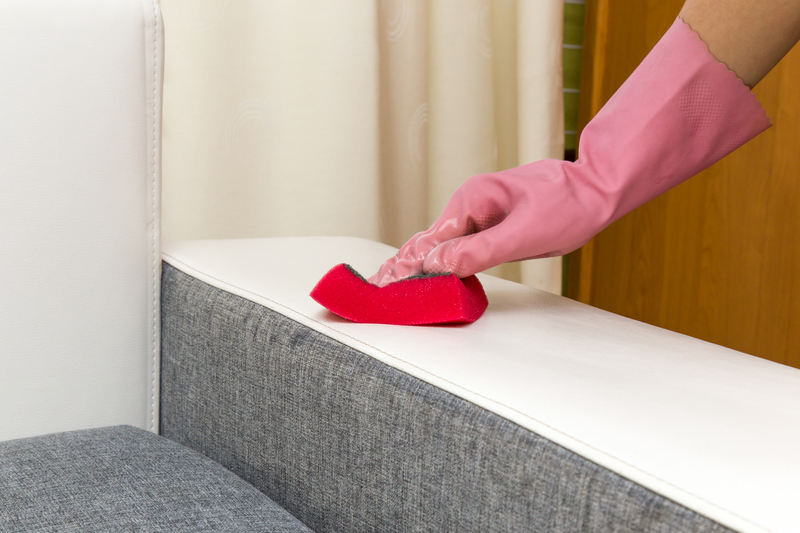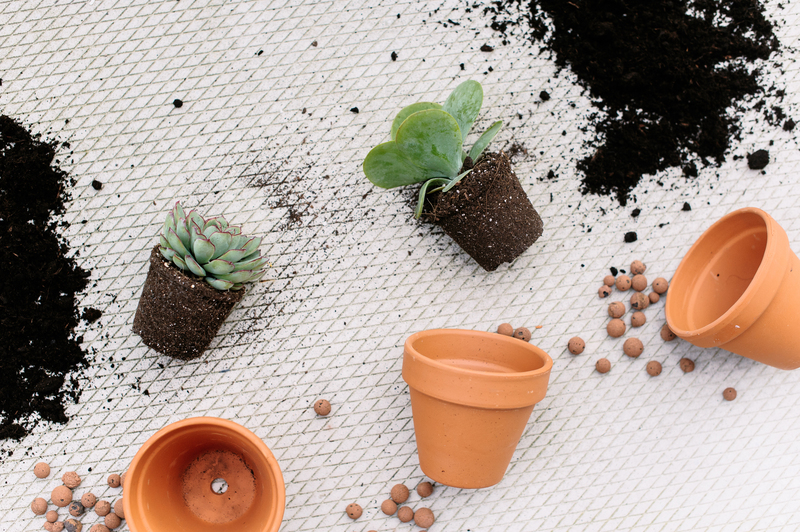Clean, fresh window sills: Tips for mould removal
Posted on 20/06/2025
Clean, Fresh Window Sills: Tips for Mould Removal
Window sills play an essential role in every home, serving as both a functional and decorative feature. However, due to their exposure to condensation and moisture, they often become prime locations for mould growth. If you've noticed unsightly black or green patches on your window sills, it's crucial to address the problem quickly. This guide will provide valuable, actionable advice for effective mould removal, as well as tips for maintaining clean, fresh window sills in the long run.

Why Does Mould Grow on Window Sills?
Mould thrives in damp, poorly ventilated areas--making window sills, especially in bathrooms, kitchens, or basements, susceptible targets. When condensation forms on cold window panes and then drips down to the sills, it creates a moist environment ideal for mould spores to take hold.
- Condensation from temperature differences
- Poor airflow around windows
- Leaky window seals or frames
- High indoor humidity
Ignoring mould on window sills can contribute to musty odours, health issues, and even structural damage to wood or paint. That's why understanding how to remove mould from window sills is so important.
How to Identify Mould on Window Sills
Before you begin the cleaning process, it's essential to identify whether you're dealing with mould or mildew on your window frames and sills.
- Mould appears as black, green, or even sometimes orange spots. It often feels fuzzy or slimy to the touch.
- Mildew is generally powdery and white or grey, but can also be harmful.
Pro tip: Always wear gloves and a mask when inspecting or removing possible mould spores to avoid respiratory irritation.
Essential Tools and Ingredients for Window Sill Mould Removal
Cleaning window sills efficiently requires the right tools and solutions. Some standard household ingredients are surprisingly powerful for tackling mouldy window sills:
- White vinegar: Naturally antimicrobial and effective against many moulds.
- Baking soda: Great for scrubbing and neutralizing odours.
- Hydrogen peroxide: A potent mould killer for porous and non-porous surfaces.
- Lemon juice: Adds freshness and minor mould-fighting properties.
- Commercial mould cleaners: Look for products specifically formulated for indoor mould treatment.
- Microfiber cloths or scrubbing brushes
- Spray bottle
- Old towels or disposable paper towels
- Protective gloves and a mask
Step-By-Step Guide to Removing Mould from Window Sills
1. Preparation: Safety First
- Open the window to provide fresh air and reduce the concentration of airborne spores.
- Wear rubber gloves, a mask, and old clothing to protect yourself from mould exposure.
- Lay an old towel or plastic sheet below the sill to catch drips and debris.
2. Dry Up Excess Moisture
Blot any visible moisture with a paper towel or dry cloth. This prevents further spread of mould as you clean.
3. Scrape Off Excess Mould
- Use a dull knife or plastic scraper to gently remove visible mould clumps.
- Be careful not to damage paint or wood underneath.
4. Apply a Mould Removal Solution
- Vinegar method: Fill a spray bottle with undiluted white vinegar and thoroughly mist the affected area. Allow it to sit for 60 minutes.
- Hydrogen peroxide method: Spray 3% hydrogen peroxide directly onto the mould. Let it bubble for 10-15 minutes.
- Baking soda method: Mix baking soda with water to form a paste; use a brush to apply it to mouldy spots.
- Commercial cleaner: Follow the label instructions closely for safety and effectiveness.
5. Scrub and Wipe Clean
- Use a stiff brush or sponge to scrub away loosened mould.
- Wipe down thoroughly with clean, damp microfiber cloths to remove all residue.
- Repeat application and scrubbing if mould persists.
6. Dry the Window Sill Completely
- Mould will return if the area stays moist.
- Dry with a towel, then leave the window open to encourage airflow until fully dry.
7. Dispose of Cleaning Materials Safely
If using disposable wipes or towels, bag and discard them immediately to avoid spreading spores to other rooms.
Common Mistakes to Avoid in Window Sill Mould Removal
- Don't mix bleach and ammonia-based products, as they produce toxic fumes.
- Don't paint over mould--this simply traps it and allows it to keep growing beneath the surface.
- Avoid using abrasive pads that scratch paint or wood, creating future mould-friendly crevices.
- Never ignore the source of moisture; without eliminating it, the problem will return.
Non-Toxic Mould Removal Solutions for Window Sills
Many homeowners prefer eco-friendly and non-toxic solutions for cleaning, especially with kids or pets around. Here are the best options for a green approach to window sill mould removal:
- White vinegar: Destroys 80% of mould species and leaves no toxic residue. It's slightly acidic, making the surface less hospitable to future growth.
- Baking soda: Safe for almost all surfaces, gentle, and helps absorb odours.
- Tea tree oil: Just a teaspoon mixed with a cup of water (in a spray bottle) makes a powerful natural mould fighter. The scent also helps neutralize musty odours.
Tip: Always test any cleaning solution on a small, hidden part of the window sill before treating the entire surface, especially if you have wood finishes or delicate paintwork.
Preventing Mould from Returning to Your Window Sills
Once you've restored your window sills to a clean, fresh state, proactive maintenance is essential to keep them mould-free.
1. Improve Air Circulation
- Open windows regularly to allow fresh air in and reduce humidity.
- Use fans or dehumidifiers in damp rooms (like bathrooms and basements).
2. Control Indoor Humidity
- Aim for humidity levels between 30-50% throughout your home.
- Fix any leaks or sources of pooled water near windows.
3. Clean Window Sills Regularly
- Dust and wipe down window sills weekly.
- Treat with diluted vinegar solution monthly to discourage mould regrowth.
4. Check Window Seals and Caulking
- Inspect caulking and seals for cracks allowing moisture intrusion. Repair as needed.
5. Use Moisture Absorbers
- Place silica gel or moisture-absorbing crystals near windows to catch excess humidity.
6. Consider Anti-Mould Paint
- Refinish wood or painted sills with special mould-resistant paints available in most hardware stores.
Remember: Consistency in your cleaning and prevention routine is key to having permanently mould-free window sills.
Health Risks Associated with Mouldy Window Sills
It's not just an aesthetic issue--mould on window sills can pose a risk to health, especially for children, pets, or individuals with allergies or compromised immune systems. Symptoms of exposure include:
- Allergy-like reactions (sneezing, coughing, watery eyes)
- Aggravated asthma
- Headaches and fatigue
- Skin rashes
- Musty odours causing discomfort
Immediate and thorough removal of mould from window sills helps protect your household's health, air quality, and comfort. Taking action promptly is always best.

When to Call a Professional for Mould Removal on Window Sills
Most surface-level window sill mould can be handled with the above DIY cleaning steps. However, in the following situations, consider professional remediation:
- Mould covers an area larger than 1 square meter (approx. 10 square feet).
- Mould keeps returning quickly after cleaning.
- You suspect structural or water damage inside the wall or beneath the sill.
- You or a family member experiences serious health symptoms linked to mould exposure.
Professional mould remediation experts have specialized tools and protective equipment to safely handle large or hidden infestations, ensuring long-term solutions for your home.
Summary: Maintaining Clean, Fresh, Mould-Free Window Sills
Mould on window sills is a common household nuisance, but with the right tools, knowledge, and regular maintenance, it's easy to keep your home environment healthy and fresh. To recap:
- Identify and deal with the sources of moisture--fix leaks and control humidity.
- Clean thoroughly using safe and effective solutions like vinegar, baking soda, or hydrogen peroxide.
- Wear protective gear during cleaning to prevent health risks.
- Practice prevention by improving airflow, repairing window frames, and using anti-mould treatments.
With these trusted mould removal tips for window sills, you can restore beauty and cleanliness to your home while protecting your loved ones from the dangers of household mould. Make mould prevention a part of your home care routine, and enjoy the improved comfort and appearance of spotless, fresh window sills every day!





